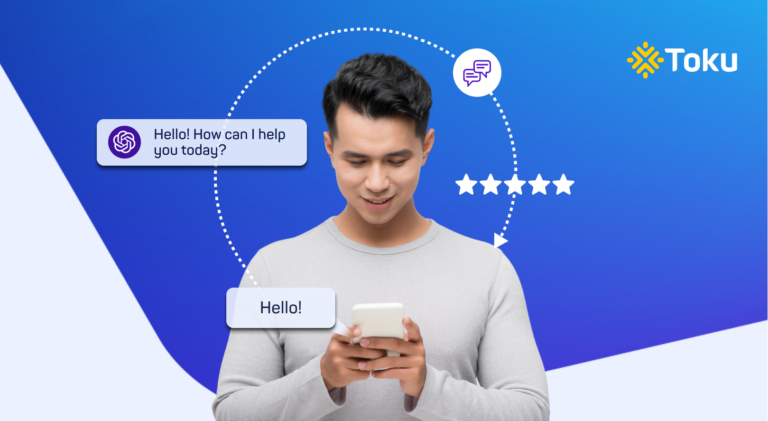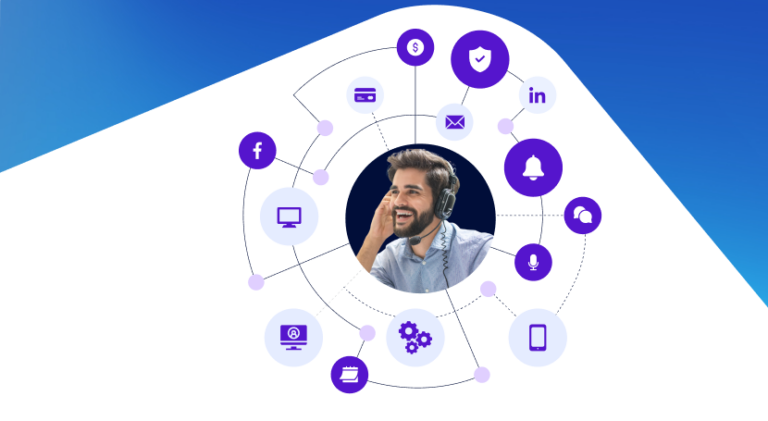Why should businesses give two hoots about unifying all their workplace communications into one, single platform? We give you the low down on the benefits of UCaaS for business.
Recently, ChatGPT has gained popularity for its ability to perform tasks previously thought to be exclusive to humans.
These include tasks like generating creative content such as poems, product descriptions and social media posts. It can also assist with language translation, summarise long texts, generate code for programming, and even provide nuanced answers in conversations.
The last application is particularly interesting for contact centres and customer support because there is potentially a way (or several ways) to utilise ChatGPT as a conversational AI in customer service.
In this article we will explore the impact that ChatGPT and generative AI could have on contact centres and how businesses will use it to improve customer experiences in future.
Also, we will share what we think are the limitations of this technology, and some more realistic use cases for supporting both agents and supervisors in the call centre context.
What can a ChatGPT-fueled chatbot do for your customer experience?
We think it’s possible that all chatbots in contact centres of the future could be fueled by ChatGPT to enhance customer support.
For example, an organisation can use ChatGPT to analyse and summarise their data (all kinds of data points including customers’ details, customer communications on every channel, user behaviours, customer sentiment, etc.)
It can recognise patterns and predict outcomes unique to the business, which can be useful for customer service centres, as it can help them respond quickly and accurately to customer questions and handle a lot of inquiries at once via a ChatGPT-powered chatbot.
Picture this:
You open a bank’s website or messaging platform, and a friendly, ultra helpful ChatGPT-fueled chatbot greets you and starts answering your enquiries in a way that goes beyond anything you’ve experienced with chatbots in the past.
It handles basic tasks such as
- Providing account balance information,
- Transaction history, and
- Account alerts on demand,
Without you having to manually find the information yourself by navigating a website or app.
Secondly, the supercharged chatbot can handle more complex requests such as assisting you with comparing various financial products you might be interested in. You just need to tell which products you want to compare, and it automatically gives you a handy comparison table.
It may sound far-fetched, but anyone who has played with ChatGPT will testify to its amazing ability to extract data points from unorganised text, and then summarise them with remarkable accuracy into insights that a human can understand.
Contrast this with other chatbots.
They were often limited in their ability to provide helpful responses beyond basic, scripted answers. That’s because they relied on pre-defined templates and had difficulty understanding the nuances of natural language, leading to frustrating and unproductive customer conversations.
Don’t believe us?
In Toku’s Singapore Consumer Engagement Report 2022, only 2% of respondents rated chatbots as their most preferred communication channel (the lowest ranking amongst all the communication channels).
With ChatGPT powers though, we think it’s just a matter of time before public perception of customer service chatbots turns positive.
***If you want to know how consumers feel about chatbots in our consumer engagement research for 2023, you should sign up for our new newsletter! Add your details in the subscription form, and you’ll get first dibs when we release the report this year.***
Empowering your contact centre agents with ChatGPT
It’s really cool to see how AI technology like ChatGPT can empower customer service agents!
One of the key metrics to measure agent performance is their handle time.
By using a “ChatGPT assistant” feature that maybe could be embedded in the contact centre platform, businesses can reduce the time it takes for agents to handle inquiries by automatically searching through all of the company’s knowledge sources, including their “Help Centre” articles, past customer conversations and PDF documents.
Then it suggests answers for the agents in real-time.
This means the agent’s task now is more to evaluate the suggested answers in real-time, and pick the right one for the customer on the phone or chat.
This is how agents can work more efficiently and confidently, which is pretty awesome!
Should contact centre managers give away complete control of their customer interactions to ChatGPT in the name of digital transformation?
Absolutely NOT.
Although the technology is capable of some pretty amazing things, it is still far from perfect.
For example, ChatGPT is well known for spouting replies that “sound like it is far too sure of itself.”
It has an annoying tendency sometimes to ‘make up the facts’ all in the name of finishing a reply to your question in a persuasive, grammatically correct way that sounds human.
When you put this in the contact centre context, it could be a recipe for disaster.
Because then you could end up giving your customers completely inaccurate information.
Bottom-line: Customers still want to get a response from a human. This is why with any kind of tool for digital transformation, you must retain the human touch – meaning, some level of control with a human being is necessary. This also ensures you are the one managing the accuracy of the information being conveyed to a customer (not a bot).
Toku Tip: Beyond oversight, we think it is critical for a business to be able to offer customers direct communication access to a human agent in all platforms, on all channels. For example, if you have an app, do embed in-app calling capability inside it because you never know when a customer wants to make a complex query that might not be able to be processed via live-chat or chatbot.
More contact centres will invest in training ChatGPT with their own data sets
The intelligence of ChatGPT is limited by the data it can collect and analyse.
This is why it has been known to occasionally produce biased and/or inaccurate content.
We think that in future, more companies will have to choose between using the data that’s already available or investing time and money into training a system to process their own data.
It’s definitely an investment, but it’s worth it if contact centres want to enjoy more operational efficiency using the data that is unique to their operations.
Integrating ‘live data’ into ChatGPT applications will transform contact centres
Here’s the thing: ChatGPT is trained on massive amounts of data from the internet and history. But for contact centres that deal with customer queries in real time, historical data is sometimes insufficient. You need to live data integrations in order for the algorithm to understand the user’s sentiment in real-time in the first place.
Right now, ChatGPT is still some way from being easily connected to live data sources.
We believe technology will evolve to address the challenge of live data integration, and when it happens, we will truly see ChatGPT-powered contact centres deliver some amazing customer experiences in real-time.
Toku Tip: Did you know that enterprises can connect data-rich in-app calling to their contact centre and benefit from integrating the calling data with their customer data on the contact centre side?
Conclusion
ChatGPT and generative AI have shown remarkable abilities in performing tasks that were previously thought to be exclusive to humans. From generating creative content to assisting with language translation, these technologies have the potential to revolutionise the way businesses perform customer support in the future.
Contact centres, in particular, stand to benefit from utilising ChatGPT to support both agents and supervisors.
The operative word here is ‘Support.’
We don’t anticipate a complete handover of customer service to any new tech, as we have always believed we need a human element in customer experiences.
As with any new technology, it’s important to weigh the benefits and limitations of how it’s going to support the daily use cases of your contact centre agents and supervisors.
 V K Sanjeed
V K Sanjeed 



 Ana Castrillon
Ana Castrillon 
 Nora Huin
Nora Huin